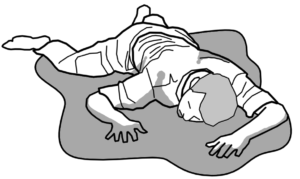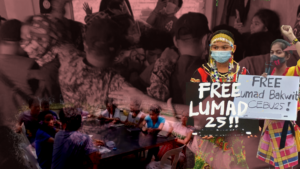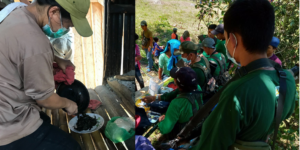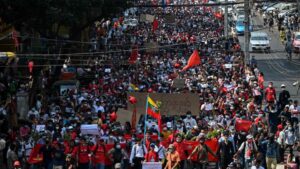NTF-ELCAC's barangay program, a military milking cow

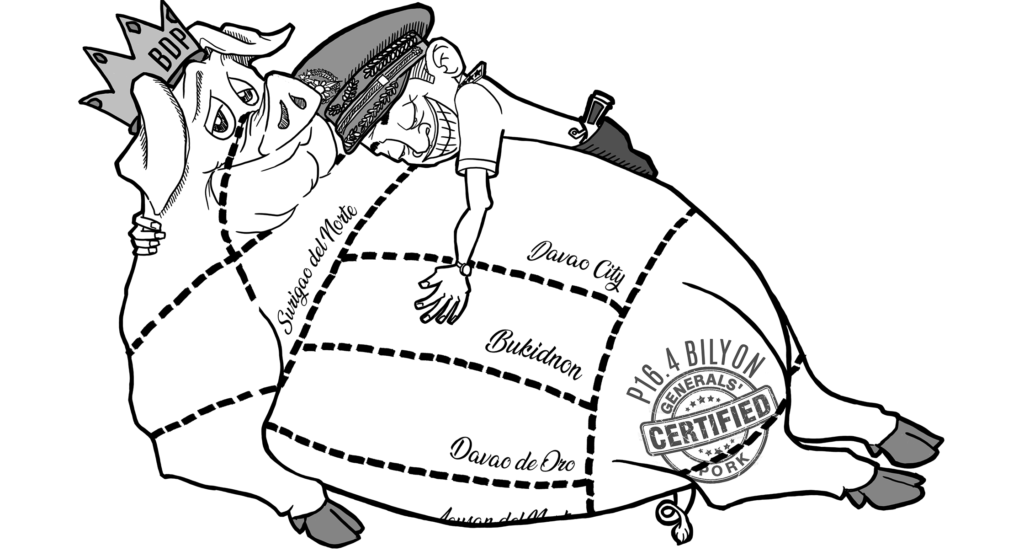
Just like the E-CLIP, “laying down of arms” and other counterinsurgency programs, the ₱16.4-billion Barangay Development Program (BDP) fund of the National Task Force to End Local Communist Armed Conflict (NTF-ELCAC) will certainly be used to line the pockets of military officials. It provides lots of opportunity for corruption in the form of kickbacks from infrastructure projects in remote communities and villages.
The NTF-ELCAC touts that the BDP will dissuade the peasant masses from further supporting the New People’s Army (NPA). Its funds will supposedly go to road construction, building schools, water systems and health centers, as well as sanitation and reforestation programs. Past regimes have repeatedly implemented such projects but failed to fundamentally improve the lives of the masses. The programs only created an illusion of change as these did not address widespread poverty, hunger, oppression and exploitation in the countryside which stem from the issue of landlessness. Just like earlier programs, the BDP will not fundamentally alter the socioeconomic conditions of the people.
Corruption is more evident under the BDP. The biggest share of funds go to Davao City, with 82 barangays listed in the program. Next to it are the provinces Bukidnon, Davao de Oro, Agusan del Norte, Agusan del Sur, Surigao del Norte, Surigao del Sur, Iloilo, Misamis Oriental and North Cotabato. Except for Iloilo, all of these are in Mindanao. Almost half of the total BDP funds is shared between two regions, namely Region 11 and Region 13. The rest of the funds is shared by the rest of the 12 regions.
These funds will supposedly be allotted to barangays that are “cleared” from the influence of the NPA. However, data collated since 2020 indicate that there were at least 100 armed encounters recorded in 46 (5.3%) of barangays included in the NTF-ELCAC’s BDP.
The uniform distribution of ₱20 million to each barangay reveals that there really was no assessment of the specific needs of its recipients and that the amount is merely to give local officials equal kickback opportunities. The NTF-ELCAC has also failed to consider the different population sizes in each barangay. As a result, there is a wide disparity in the per capita distribution of the BDP funds from ₱457 in the biggest barangay to ₱181,818 in the smallest barangay.
To justify the program, the NTF-ELCAC claimed that the BDP list was a product of rigorous vetting and multisectoral consultations. However, even Davao City Sara Duterte was forced to admit that she was not consulted about the projects. Her denial came after she was questioned about the ₱1.64-billion allocation to her city, which is 40% of the total funds allocated to the entire Davao region. The NTF-ELCAC is clearly subsuming the civil bureaucracy and local officials.
The NTF-ELCAC’s claim that at least 15% of the funds of the BDP will go to constructing schools (or ₱3 million per barangay) is pure rubbish. Data by the Department of Education indicate that, 216 of the 822 barangays in the list already have schools. These include nine schools in Malabog, Davao City; six in Colosas, Davao City; five each in Barangay Kingking, Pantukan, and barangays Tamugan and Malamba in Davao City; and four in Suawan, Davao City. Furthermore, in the BDP list of barangays in Region 11, there are 13 barangays with at least three schools each; 18 barangays that have two schools each, and 52 barangays with one school each.
Of the 82 BDP-listed barangays in Davao City, 70 (or 85%) already have schools, with 65 barangays having one to three schools, and four barangays with up to two schools and one barangay with nine schools.



